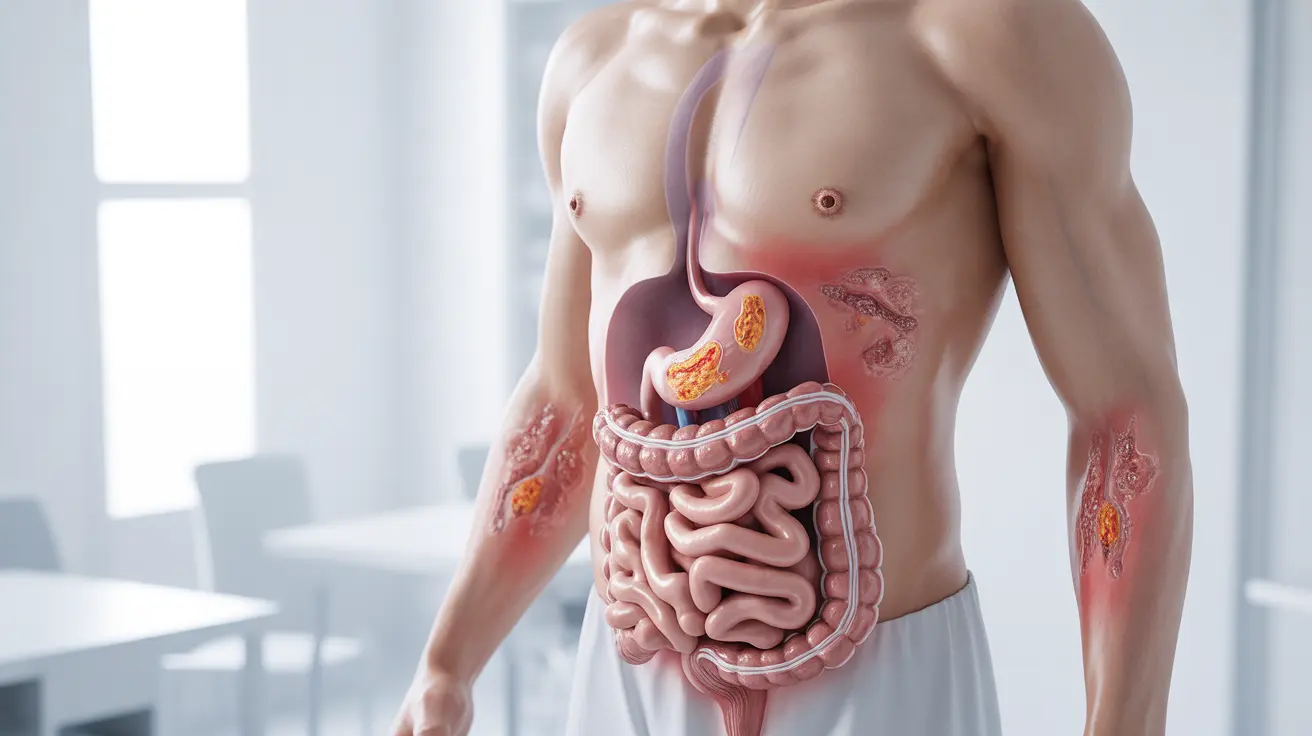For individuals living with Crohn's disease, skin complications can add an extra layer of concern to their health journey. One particularly challenging skin condition that may occur alongside Crohn's disease is hidradenitis suppurativa (HS), which causes painful boils and abscesses. Understanding the relationship between these conditions is crucial for proper diagnosis and management.
This comprehensive guide explores the connection between Crohn's disease and skin boils, helping you recognize important symptoms and understand available treatment options.
The Link Between Crohn's Disease and Hidradenitis Suppurativa
Both Crohn's disease and hidradenitis suppurativa are inflammatory conditions that can significantly impact quality of life. Research suggests that people with Crohn's disease are more likely to develop HS compared to the general population. This connection is believed to stem from shared inflammatory pathways and genetic factors.
Common Symptoms and Warning Signs
Skin Manifestations
The primary skin symptoms that may indicate HS in Crohn's disease patients include:
- Painful bumps or boils in skin folds
- Recurring abscesses in specific areas
- Tunnel-like tracts under the skin
- Scarring from repeated inflammation
Digestive Symptoms
When both conditions are present, patients may experience:
- Abdominal pain and cramping
- Chronic diarrhea
- Weight loss
- Fatigue
- Reduced appetite
Risk Factors and Triggers
Several factors can increase the likelihood of developing both conditions:
- Genetic predisposition
- Obesity
- Smoking
- Hormonal changes
- Immune system dysfunction
Diagnosis and Assessment
Proper diagnosis requires careful evaluation by healthcare professionals, typically including:
- Physical examination
- Medical history review
- Skin biopsies when necessary
- Imaging studies
- Blood tests to assess inflammation levels
Treatment Approaches
Medical Management
Treatment options often target both conditions simultaneously and may include:
- Biologics (TNF inhibitors)
- Immunosuppressants
- Antibiotics for infection control
- Anti-inflammatory medications
Lifestyle Modifications
Supporting medical treatment with lifestyle changes can help manage symptoms:
- Maintaining a healthy weight
- Quitting smoking
- Wearing loose-fitting clothing
- Following proper skin hygiene
- Managing stress levels
Frequently Asked Questions
What is the connection between Crohn's disease and skin boils caused by hidradenitis suppurativa? Both conditions share inflammatory pathways and genetic factors, making them more likely to occur together. They are both autoimmune-related conditions that can affect multiple body systems.
What symptoms of hidradenitis suppurativa should make me concerned about Crohn's disease? If you have HS and experience persistent diarrhea, abdominal pain, unexplained weight loss, or fatigue, these could be signs of Crohn's disease that warrant medical evaluation.
How is hidradenitis suppurativa diagnosed and treated, especially when linked with Crohn's disease? Diagnosis involves physical examination, medical history review, and possibly skin biopsies. Treatment often includes medications that target both conditions, such as biologics, along with proper wound care and lifestyle modifications.
What common risk factors increase the chances of having both Crohn's disease and hidradenitis suppurativa? Common risk factors include genetic predisposition, obesity, smoking, immune system dysfunction, and hormonal changes. Managing these factors can help reduce the risk and severity of both conditions.
Can treatments for Crohn's disease also help manage the skin boils and abscesses caused by hidradenitis suppurativa? Yes, certain treatments, particularly biological medications like TNF inhibitors, can help manage both conditions simultaneously. These medications target the underlying inflammation that contributes to both diseases.




